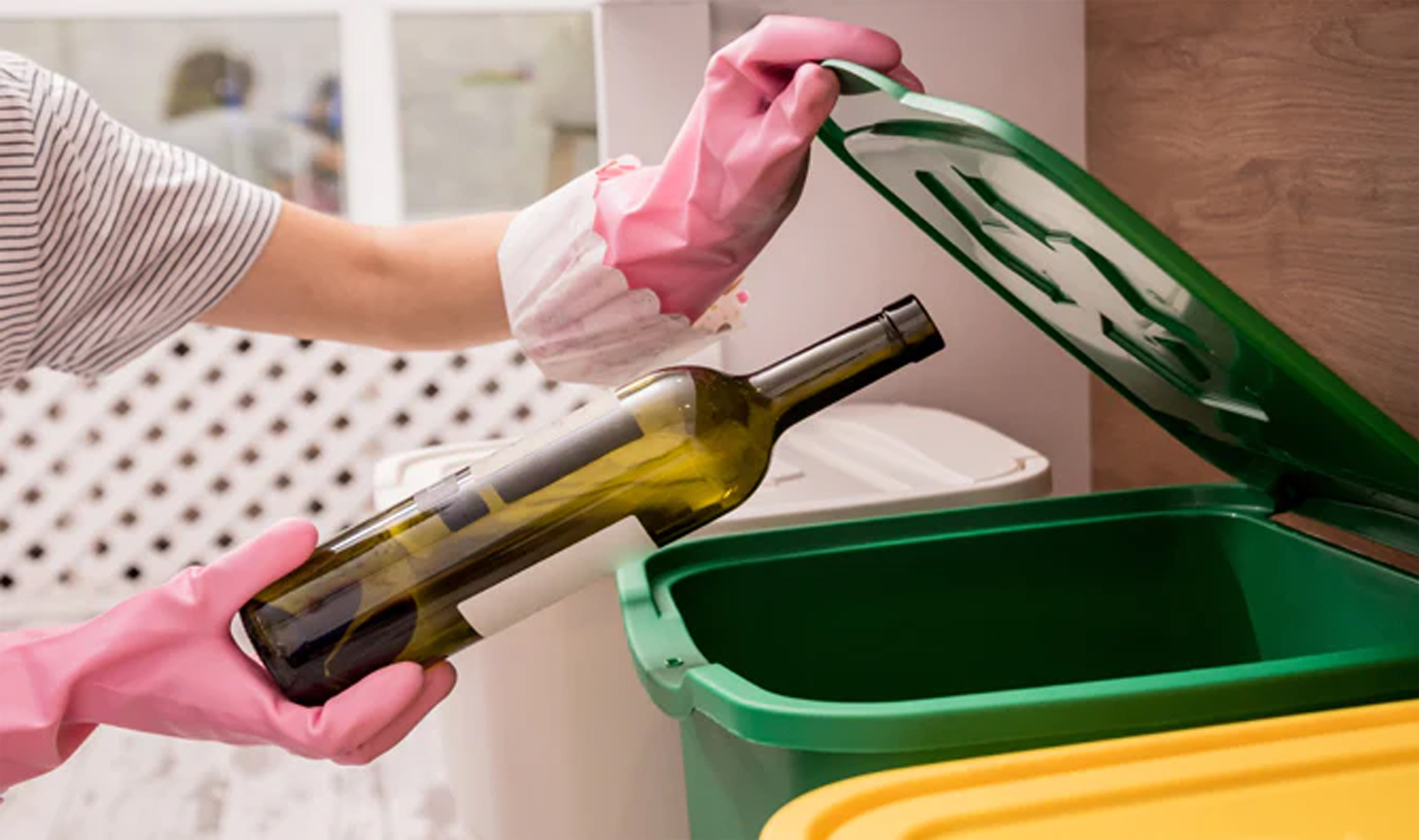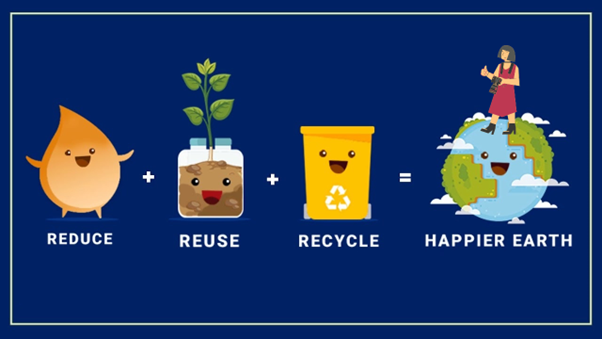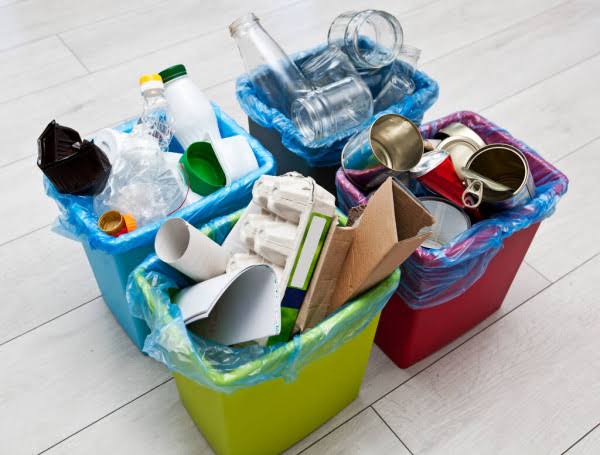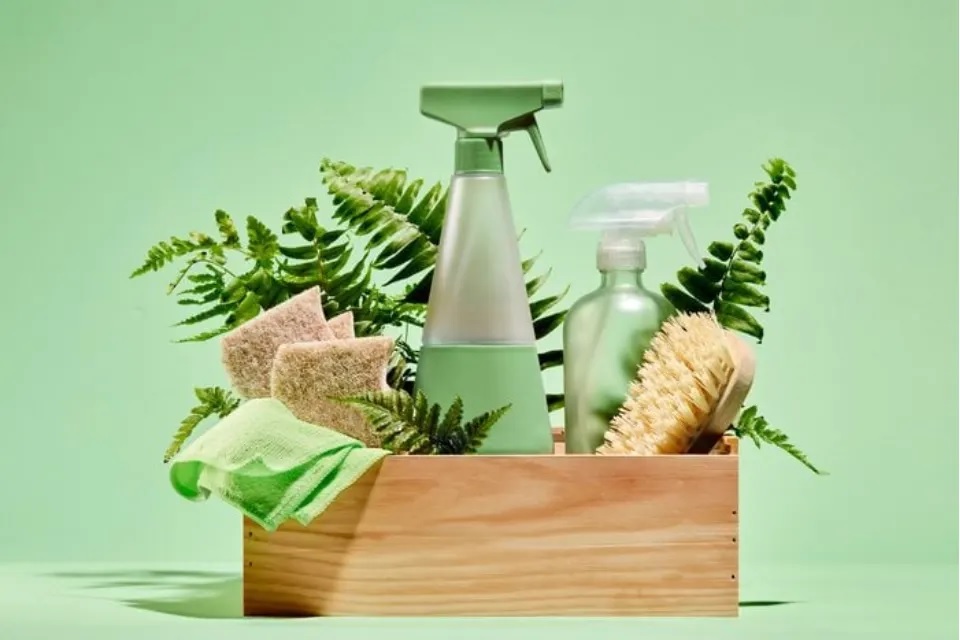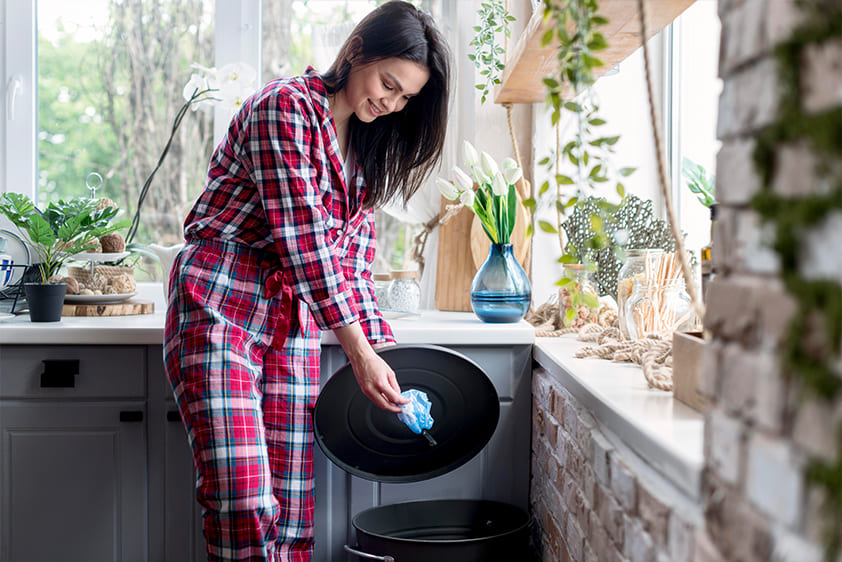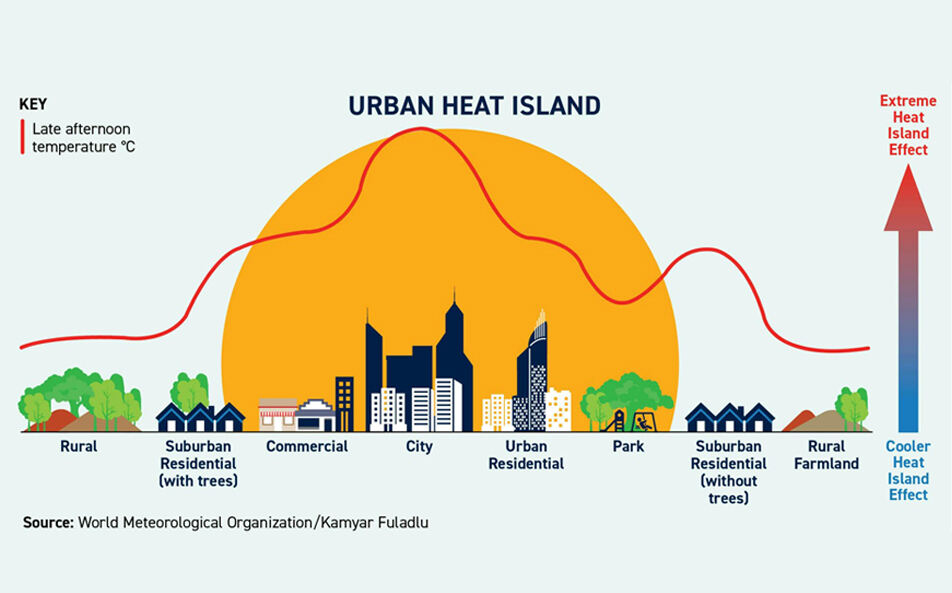
The United Indian

Are you ready to take steps toward a more sustainable lifestyle?
In an era where environmental consciousness is paramount, adopting eco-friendly practices at home has become essential. Going green not only helps preserve the planet but also creates a healthier, more sustainable living environment. One crucial aspect of this green journey is waste management.
Going green at home is not only beneficial for the environment but also for your wallet. There are many simple things you can do to reduce your waste and environmental impact. In this comprehensive guide, we'll explore 10 ways to reduce waste at home and contribute to minimizing carbon footprint and live a more eco-friendly life. From reducing plastic waste to composting, we've got you covered.
1. Reduce, Reuse, Recycle
The three R's are the foundation of waste segregation at both home and workplace. Reduce the amount of waste you create in the first place by buying less stuff, reusing items whenever possible, and recycling everything you can.
Reduce
- Buy less stuff overall. Before you buy something, ask yourself if you really need it.
- Choose products with minimal packaging.
- Avoiding single-use items & disposable items whenever possible.
- Bring your own reusable bags, water bottle, coffee mug, and utensils when you go out.
- Buy in bulk to reduce packaging waste.
- For reducing household waste, start by evaluating your household's waste generation.
- Identify areas where you can cut back, such as minimizing food waste by planning meals and utilizing leftovers.
Reuse
- Repair broken items instead of throwing them away.
- Repurpose old items for new uses. For example, you can use old glass jars to store food or make crafts.
- Donate unwanted items to charity or thrift stores.
Recycle & Upcycle
Recycling is an effective way to divert waste from landfills. Recycle all the materials that your local recycling program accepts and ensure you separate materials correctly. This includes paper, cardboard, plastic, metal, and glass. Get creative with upcycling and repurposing old items. Old furniture, clothing, and household items can often find a new life with a little creativity.
2. Compost Food Scraps And Yard Waste.
Composting at is a great way to reduce food waste and create nutrient-rich soil for your garden. Its a very simple process and all it requires a little efforts towards waste segregation at home. To compost, collect your food scraps, yard waste, and other organic materials in a compost bin or pile. The materials will break down over time, creating nutrient-rich compost that you can use to fertilize your plants. Compost enhances soil fertility, reduces the need for chemical fertilizers, and lowers greenhouse gas emissions.
3. Avoid single-use plastics
Single-use plastics are a major source of waste pollution. They are often used for just a few minutes before being thrown away, and they can take hundreds of years to decompose. To reduce your use of single-use plastics, bring your own reusable bags, water bottle, coffee mug, and utensils when you go out. You can also avoid single-use plastic straws, stirrers, and utensils at restaurants. The amount of waste they generate at home makes it all the more important to understand why is waste management important.
4. Shop Smart : Buy local and sustainable products
When you buy local and sustainable products, you are supporting businesses that are committed to reducing their environmental impact. Local businesses often have shorter supply chains, which means that their products have less of a carbon footprint. Sustainable businesses use environmentally friendly materials and practices.
5. Go Paperless
In the midst of this digital age, we find ourselves at a unique juncture where technology not only enhances our lives but also empowers us to make conscious choices for the betterment of the environment. One such choice is going paperless. In a world dominated by smartphones, tablets, and laptops, there's really no need to clutter your home with stacks of paper bills and statements. It's an era where convenience meets sustainability. Undoubtedly, it makes place it 10 ways to reduce waste at home.
Opting for paperless billing and communication is not just a matter of convenience; it's a significant step toward reducing paper waste. When you make the switch to paperless options, you not only declutter your physical living space but also reduce your ecological footprint.
6. Conserve Water
There are many ways to conserve water at home, such as:
- Leaky faucets and pipes can waste a lot of water. Even a small leak can waste hundreds of gallons of water per year. To save water, fix any leaky faucets or pipes in your home as soon as possible.
- Turning off the faucet while you brush your teeth or shave.
- Choose native plants that require less water.
- Collect rainwater in barrels to use for gardening and other non-potable purposes.
7. Adapting Waste Segregation At Home
Adapting waste segregation at home is an excellent way to contribute to a cleaner environment and a more efficient waste management system. It's not as complicated as it may sound, and with a few simple steps, you can easily incorporate waste segregation into your daily routine. Here's a guide on how to do it:
Understand the Types of Waste
Before you start segregating your waste, it's essential to understand the different types of waste. Waste is typically categorized into three main groups:
a. Biodegradable Waste : This includes organic materials like kitchen scraps, food waste, and garden waste. Biodegradable waste can be decomposed naturally.
b. Recyclable Waste : Recyclable waste includes materials like paper, cardboard, glass, plastic, and metal. These items can be recycled to create new products.
c. Non-Recyclable Waste : Non-recyclable waste consists of items that can't be recycled or composted, such as sanitary products, diapers, and certain plastics.
Set Up Separate Bins
To make waste segregation at home easy, place separate bins or containers in a convenient location in your home. Label them clearly to indicate the type of waste they should hold. You can use color-coded bins to make it even simpler. For example:
- Green bin for biodegradable waste
- Blue bin for recyclable waste
- Red bin for non-recyclable waste
Educate Your Household
Ensure that all members of your household understand the importance of waste segregation and how it works. Educate them on which items go into each bin. It's a good idea to involve your family in the process, as it promotes a sense of responsibility and teamwork.
Separate Waste at the Source
The key to effective waste segregation at home is to separate waste at the source. This means that when you dispose of an item, you place it in the correct bin right away. For example, when you finish a meal, scrape food scraps into the green bin and put recyclable items like glass bottles or aluminum cans in the blue bin.
Be Mindful of Contamination
Contamination occurs when the wrong type of waste ends up in the wrong bin. This can undermine the recycling process. Be extra careful to prevent contamination by educating your family and double-checking what you're putting in each bin.
8. Use eco-friendly cleaning products
Many conventional cleaning products contain harsh chemicals that can pollute the environment and damage your health. To reduce your environmental impact, choose eco-friendly cleaning products that are made with non-toxic ingredients.
- Homemade Cleaning Products : Create eco-friendly cleaning solutions using everyday ingredients like vinegar and baking soda. They are effective and safe for your family and the environment. Once you start doing this, you understand the importance of waste segregation.
- Eco-Friendly Cleaning Tools : Use reusable and eco-friendly cleaning tools like microfiber cloths and washable mop heads to minimize waste.
9. Dispose Of Hazardous Waste Properly
Hazardous waste, such as batteries, paint, and motor oil, should be disposed of properly to prevent environmental contamination. Many communities have hazardous waste collection programs that accept these materials.
10. Educate Yourself And Others About Waste Management
The best way to reduce waste is to learn about the problem and find solutions. There are many resources available to help you learn more about waste management, including websites, books, and articles. You can also talk to your friends and family about waste management and encourage them to make changes in their own lives.
Key Takeaways
As we become more aware of why is waste management important at home, following these tips can help you reduce your waste and environmental impact. By making small changes in your daily life, you can make a big difference for the planet. Going green at home is good for the environment and your wallet. By reducing your waste and energy consumption, you can save money on your utility bills and help to protect the planet.
Read more in Environment
May 27, 2025
TUI Staff
May 27, 2025
TUI Staff

Stay Tuned with The United Indian!
Our news blog is dedicated to sharing valuable and pertinent content for Indian citizens. Our blog news covering a wide range of categories including technology, environment, government & economy ensures that you stay informed about the topics that matter most. Follow The United Indian to never miss out on the latest trending news in India.
©The United Indian 2024






